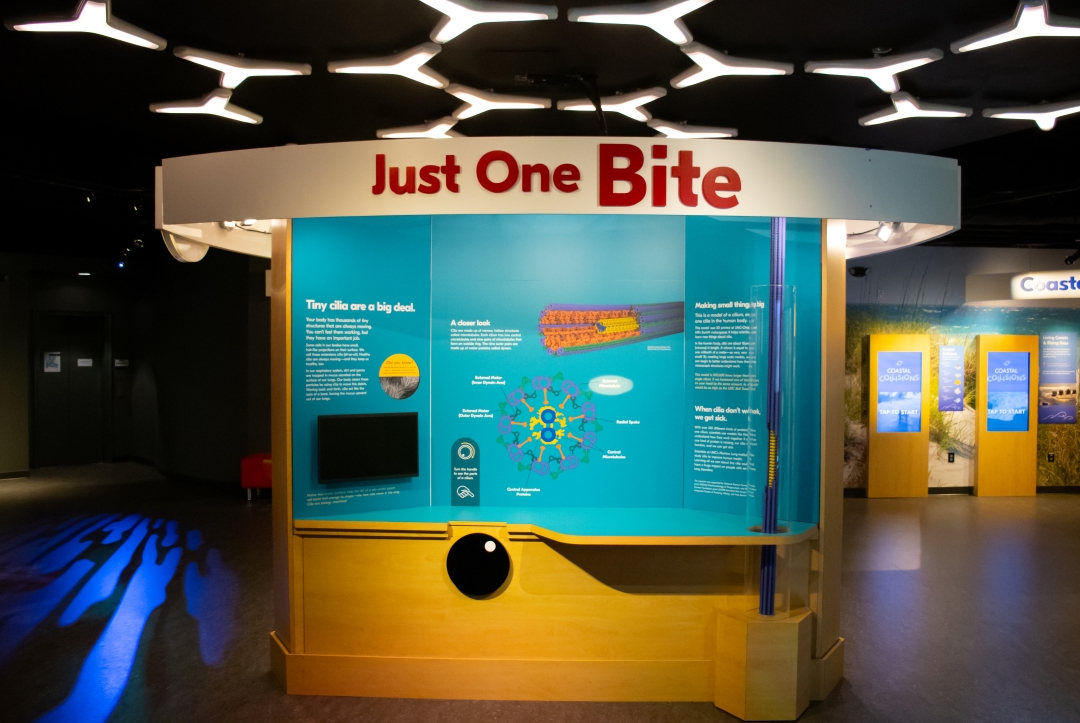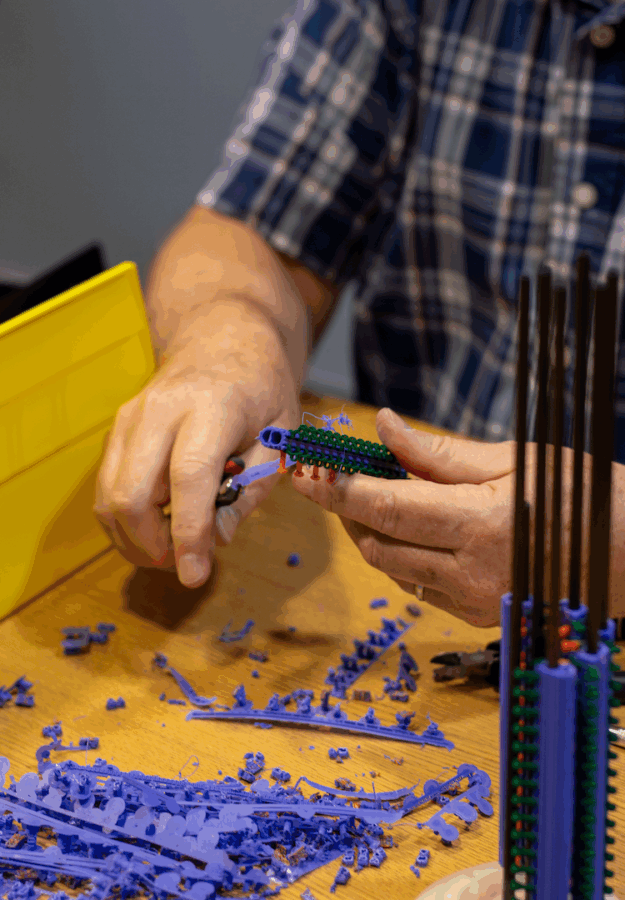New Breakthrough Hub exhibit highlights university partnerships
By CHRISTOPHER KATELLA
CHAPEL HILL, NC (October 4, 2024)— Morehead Planetarium and Science Center has partnered with UNC-Chapel Hill researcher Richard Superfine, PhD, and Glenn Walters with BeAM@CAROLINA for a new exhibit exploring the science of cellular mechanics.
Located in Morehead’s Breakthrough Hub, the cilia exhibit represents the latest evolution of the space, highlighting an ongoing opportunity for UNC-Chapel Hill researchers to share their work with broader audiences.
An idea long in the making
Superfine, the Taylor-Williams Distinguished Professor in the Department of Applied Sciences in the College of Arts and Sciences, began researching cystic fibrosis two decades ago with the UNC Cystic Fibrosis Center. This work was part of the Virtual Lung Project, which included nearly 20 research scientists from various backgrounds, including those from clinical practice and fields such as biology, physics, computer science, and chemistry. While this work was underway, Superfine began contemplating various ways of sharing insights into this research on a wider scale.

“The opportunity to display my research at Morehead began many years ago when we participated in developing an exhibit called ‘Zoom In,'” said Superfine. “We discussed the issues of basic science and the disease of cystic fibrosis from the molecular scale to the cellular level, from the lung to the full person.”
For years, the idea remained on the shelf until recently when Superfine and his team received a grant from the National Science Foundation (NSF) and support from Morehead’s Broader Impacts Fund. Soon, the idea began to turn into reality. “The specific recent opportunity came through NSF funding to develop a molecular model of cilia,” Superfine explained. “These are the actuating structures that generate the fluid flow in the lung that keep the lung sterile. We’ve been studying these structures for about 20 years, and they are stunning, highly orchestrated systems.”
“When we dug into the research, we all felt learning about how and why cilia move in the body was most compelling to our visitors,” shared Michele Kloda, Director of Innovation and Design.
“The NSF grant is twofold,” Superfine noted. “One is a grant on phagocytosis, which is how cells engulf infectious agents. The other grant is on using an engineered version of these cilia, which we have developed into a biotechnology product being commercialized by a startup company in Research Triangle Park.”
While working with Superfine and his team, an opportunity arose to engage with BeAM@CAROLINA through Walters, Senior Technical Advisor and Director of the BeAM Design Innovation Hub. “BeAM came into the conversation later, and we’re so glad Glenn Walters and his team were invited to the table,” shared Kelly Marks, Morehead’s Exhibits Manager who coordinates the project. “Their expertise in materials and construction is important for this project.”
Previewing a new experience
Morehead’s exhibits team hopes the new cilia exhibit, which replaces a previous exhibit focusing on malaria research, will be an example of how it can provide updated experiences for its visitors in the Breakthrough Hub. “The work with Rich, Glenn, and the rest of the BeAM team has allowed us to truly test the process of flipping one current science topic to another in the Breakthrough Hub exhibit space,” explained Marks. “We’ve had direct access to the researchers, their data, and imagery, which helps us ensure the content is accurate and the experience is authentic.”

Visitors to the exhibit can look forward to seeing images and videos of actual cilia in action, as they are within our bodies, impacting our internal procedures. “They may not be able to see or feel these events (in the moment), but our cilia work round the clock to keep that person healthy,” shared Kloda. “We will introduce visitors to the discovery that processes in the human body depend upon tiny biological motors. Who knew we had ‘motors’ in our bodies?”
One of the most notable features is a large-scale 3D-printed model of a cilium, an effort that took hours of processing to complete through the work of colleagues with BeAM. “Glenn Walters had been working with Rich on ways to create a giant model of a cilium, so this grant presented the opportunity for them to work with Morehead on the material choices, the fabrication, and the final display,” said Kloda.
Reflecting on the opportunities a partner such as Morehead provides, Superfine believes the institution uniquely aids UNC researchers by providing an outlet for their research to inspire visitors across the state. “We need to rebuild the trust that the citizens of North Carolina and the world have in science and engineering,” he emphasized.
Superfine also believes the new exhibit demonstrates the collaborative nature of research and its importance to the scientific process. “We need students with outstanding social intelligence to become scientists. This will dramatically improve the quality of science we do and our ability to inspire and communicate our science to the population at large.”
“Rich and Glenn understand and fully embrace the mission of Morehead Planetarium and Science Center,” and shared Kloda. “We couldn’t have asked for better collaborators on a project like this.”
